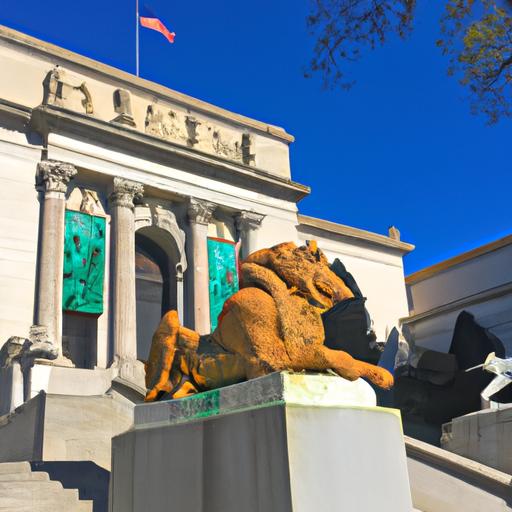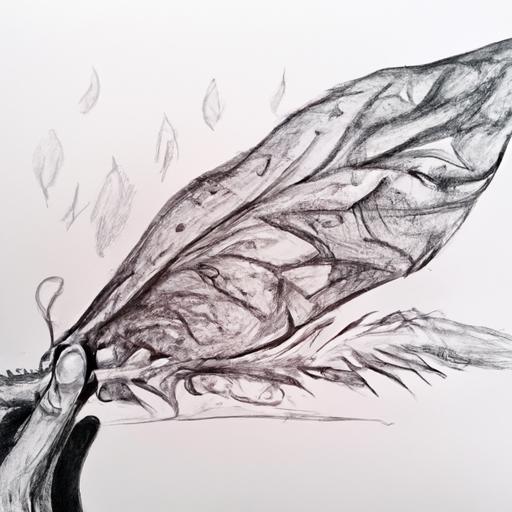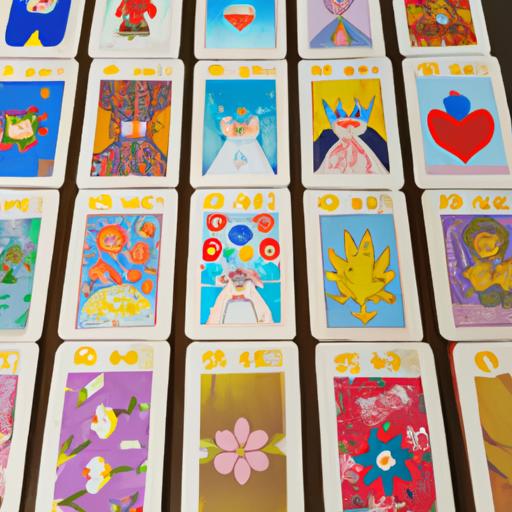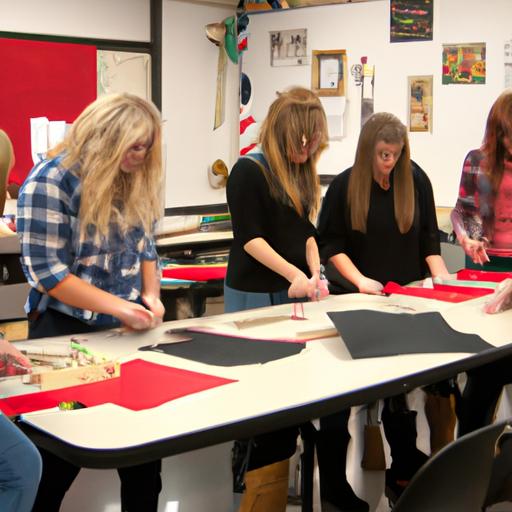From the mesmerizing strokes of a traditional paintbrush to the precision of a digital stylus, the world of art has witnessed a remarkable evolution. With the rise of technology, digital art has emerged as a powerful medium, challenging the age-old techniques of traditional art. But how does the digital artist fare against the traditional art drawing circle? Let’s delve into the captivating realm of artistry and uncover the nuances that set these two worlds apart.
A. Overview of Digital Art and Traditional Art
In this digital age, digital art has revolutionized the way we create and appreciate art. Utilizing various computer software and tools, digital artists can bring their imagination to life with a single click. On the other hand, traditional art encompasses the rich heritage of painting, drawing, and sculpting, rooted in centuries of artistic expression. From oil paintings to charcoal sketches, traditional art offers a tactile experience that connects the artist and the audience on a profound level.
B. Importance of Comparing Digital Art and Traditional Art Drawing Circles
As the art world becomes increasingly diverse, understanding the differences and similarities between digital art and traditional art drawing circles becomes crucial. By exploring these realms side by side, we gain insight into the strengths and limitations of each medium. Whether you’re an aspiring artist seeking your niche or an art enthusiast curious about the evolving landscape, this comparison sheds light on the unique qualities that shape both digital and traditional art.
Join me on this artistic journey as we navigate the intricacies of digital art and traditional art drawing circles. Together, we’ll uncover the distinct advantages, disadvantages, and impact of technology on these two mesmerizing forms of artistic expression. So get ready to embark on a captivating exploration, where pixels meet paintbrushes, and creativity knows no bounds.
Understanding Digital Art
Digital art has emerged as a dynamic and innovative medium, pushing the boundaries of traditional artistic expression. Let’s dive into the world of digital art and explore its definition, characteristics, advantages, disadvantages, and the tools and software that bring it to life.
A. Definition and Characteristics of Digital Art
Digital art refers to any form of artistic expression created using digital technology. It encompasses a wide range of mediums, including digital painting, digital drawing, 3D modeling, and digital photography. What sets digital art apart is its reliance on computers, software, and electronic devices to create, edit, and manipulate artistic elements. The digital canvas offers endless possibilities, allowing artists to experiment with colors, textures, and effects in ways that were previously unimaginable.
B. Advantages and Disadvantages of Digital Art
Digital art brings forth a plethora of advantages that entice artists and enthusiasts alike. Firstly, the digital medium offers a flexible workflow, enabling artists to easily edit, undo, and experiment with their creations. Additionally, digital art provides a vast array of tools, brushes, and effects that can be customized to suit an artist’s unique vision. It also allows for seamless sharing and collaboration, fostering a global community of artists.
However, digital art does come with its own set of challenges. Some argue that the digital medium lacks the tactile experience and organic textures found in traditional art. Additionally, the initial investment in hardware and software can be costly, making it less accessible to some artists. Furthermore, relying heavily on technology means that digital art is susceptible to technical glitches, software compatibility issues, and the ever-evolving nature of digital platforms.
C. Tools and Software Used in Digital Art
Digital artists employ a wide range of tools and software to bring their creations to life. Graphic tablets with pressure-sensitive styluses, such as Wacom Intuos and Huion Kamvas, provide a natural drawing experience. Software like Adobe Photoshop, Corel Painter, and Procreate offer an extensive range of brushes, layers, and editing capabilities. Additionally, 3D modeling software like Blender and ZBrush enable artists to create intricate three-dimensional artworks. With these powerful tools at their disposal, digital artists can unleash their creativity and craft stunning visual masterpieces.
Join me in the next section as we delve into the mesmerizing world of traditional art, exploring its definition, characteristics, advantages, disadvantages, and the captivating mediums and techniques that have stood the test of time.
Understanding Digital Art
A. Definition and Characteristics of Digital Art
Digital art is a progressive medium that embraces technology to create stunning visual masterpieces. It encompasses a wide range of artistic forms, including digital painting, graphic design, 3D modeling, and animation. Unlike traditional art, which primarily relies on physical materials, digital art is created and manipulated using digital tools and software. This allows artists to explore endless possibilities, experiment with various styles, and seamlessly edit their artwork with precision and ease.
B. Advantages and Disadvantages of Digital Art
Digital art offers a myriad of advantages that have propelled its popularity among artists worldwide. Firstly, it provides a more accessible and cost-effective platform for aspiring artists to express their creativity. With digital tools, artists can work from anywhere, eliminating the need for a dedicated studio space and expensive art supplies. Moreover, digital art enables artists to easily correct mistakes, experiment with different color palettes, and save multiple versions of their work without compromising the original piece.
However, every medium has its drawbacks. One of the main disadvantages of digital art is the lack of physicality. Unlike traditional art, which allows artists to engage with their materials and create tangible pieces, digital art tends to remain confined to screens and prints. Additionally, the reliance on technology and software can be daunting for those who are not well-versed in digital tools. The learning curve associated with mastering digital art techniques may discourage some artists from fully embracing this medium.
C. Tools and Software Used in Digital Art
In the realm of digital art, artists have a vast array of tools and software at their disposal. Drawing tablets, such as Wacom and Huion, provide a realistic drawing experience and allow for precise control. Digital painting software like Adobe Photoshop and Corel Painter offer extensive features and tools that emulate traditional art mediums, providing artists with the flexibility to create stunning digital paintings. Additionally, 3D modeling software such as Blender and Autodesk Maya enable artists to create intricate three-dimensional designs and animations.
As technology advances, new tools and software continue to emerge, pushing the boundaries of digital art. From augmented reality to virtual reality, these advancements open up new avenues for artists to explore, bridging the gap between the digital and physical worlds. Whether it’s a digital canvas or a virtual sculpting platform, the tools and software available to digital artists constantly evolve, empowering them to unleash their imagination in ways previously unimaginable.
Pros and Cons of Digital Art and Traditional Art Drawing Circles
As we compare digital art and traditional art drawing circles, it is essential to weigh the pros and cons of each medium. Let’s delve into the advantages and disadvantages of both digital art and traditional art in the drawing circle.
A. Advantages of Digital Art in the Drawing Circle
Digital art brings a myriad of advantages to the drawing circle, captivating artists with its versatility and boundless possibilities. With the ability to instantly undo mistakes and experiment with various techniques, digital art allows artists to explore their creativity without the fear of irreversible errors. The digital medium also offers a wide range of tools and effects, allowing artists to effortlessly create stunning visual compositions. Furthermore, digital art provides the convenience of easy storage, sharing, and reproduction, making it an ideal choice for artists seeking a wide reach and commercial opportunities.
B. Disadvantages of Digital Art in the Drawing Circle
While digital art presents numerous advantages, it also comes with its fair share of drawbacks. One of the primary concerns is the lack of tactile experience. Unlike traditional art, where artists can physically feel the texture of the canvas or the weight of a brushstroke, digital art relies solely on visual feedback. This detachment from physicality can hinder the artist’s connection with their work. Additionally, the initial investment in digital art equipment and software can be quite costly, making it less accessible for some artists. Moreover, the reliance on technology introduces the risk of technical glitches or software compatibility issues, potentially disrupting the creative process.
C. Advantages of Traditional Art in the Drawing Circle
Traditional art holds a timeless charm in the drawing circle, enchanting artists with its rich heritage and tangible allure. One of the significant advantages of traditional art is the tactile experience it offers. The artist can feel the textures, blend colors with their hands, and experience a deeper connection to their creation. Traditional art also fosters a sense of discipline and patience, as artists must master various techniques and mediums through years of practice. Additionally, traditional art holds a unique aura, with each stroke carrying the artist’s energy and leaving an indelible mark on the canvas.
D. Disadvantages of Traditional Art in the Drawing Circle
While traditional art holds undeniable appeal, it also presents its own set of challenges. Unlike digital art, traditional art is less forgiving when it comes to mistakes. Once a brushstroke is made or paint is applied, reversing or editing becomes difficult, if not impossible. This requires meticulous planning and precision, leaving little room for error. Traditional art is also more susceptible to damage and decay over time, requiring proper preservation techniques to ensure longevity. Additionally, the physical nature of traditional art can limit its reach and accessibility, making it more challenging to share and reproduce compared to digital art.
By understanding the advantages and disadvantages of both digital and traditional art in the drawing circle, artists can make informed decisions based on their preferences, goals, and creative processes. Whether you choose the digital realm or embrace the traditional path, both mediums offer a world of artistic exploration and self-expression.
Conclusion
In conclusion, the comparison between digital art and traditional art drawing circles is a captivating exploration into the ever-evolving world of artistic expression. Both mediums possess unique qualities that appeal to different artists and audiences.
Digital art offers unparalleled versatility, allowing artists to experiment, undo, and explore endless possibilities. With a wide array of tools and software at their disposal, digital artists can create intricate and awe-inspiring pieces that push the boundaries of imagination. However, this convenience comes at the cost of the tactile experience and emotional connection that traditional art provides.
Traditional art, with its rich history and time-honored techniques, holds a special place in the hearts of many artists and art enthusiasts. The texture, depth, and physicality of traditional mediums create a tangible connection between the artist’s hand and the artwork. Yet, traditional art may be limited by the constraints of physical materials and the inability to easily correct mistakes.
Ultimately, the choice between digital art and traditional art drawing circles lies in the hands of the artist. Each medium offers its own set of advantages and disadvantages, and personal preferences play a significant role in determining the path an artist chooses to embark on.
As technology continues to advance and new artistic possibilities emerge, the boundaries between digital art and traditional art may continue to blur. The key lies in embracing the best of both worlds, exploring the unique qualities of each medium, and continuing to push the boundaries of artistic expression.
So, whether you find yourself drawn to the precision of digital art or the timeless charm of traditional art, remember that art is a deeply personal and subjective experience. Embrace your creativity, experiment with different mediums, and let your imagination soar. After all, the world of art is an endless canvas waiting to be explored.





